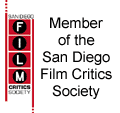|
|
||||
|
by Betty Jo Tucker  Author John Wranovics explores the relationship between two artistic giants in Chaplin & Agee: The Untold Story of the Tramp, the Writer, and the Lost Screenplay. In his well-researched book, Warnovics explains why megastar Charlie Chaplin became so important to James Agee, the former film critic turned screenwriter, and how their friendship grew during the tumultuous 1940s and 1950s. Also included is Agee’s entire screenplay for The Tramp’s New World, which was lost until recently. To movie lovers like me -- people who can’t get enough information about the world of film -- this book is a real find. Without knowing it until reading this enlightening book, I’ve been a fan of Agee’s movie contributions for a long time. He worked on the screenplays for The African Queen and Night of the Hunter, two movies I admire. I had heard about Agee’s great film reviews for Time and The Nation, but I didn’t realize the significance of his screenwriting career. Regarding his movie reviews, I can understand how pleased he must have been when poet W. H. Auden complimented his “astonishing excellence” and called Agee’s weekly column in The Nation “the most remarkable event in journalism today.” Captivated by the power of film at an early age, Agee was only seventeen years old when he wrote the following to a friend in 1927: “As for the movies . . . their possibilities are infinite -- that is insofar as the possibilities for any art CAN be. So far as I can see, all that’s been done so far is to show that art is really possible on the screen. . . Can writing or drama hope to rub your nose in realism as the movies do! Could POTEMKIN have been staged or described to even approximate the realism of the movie itself? I don’t see how.” And neither do I. Considering Agee’s strong feelings about the movies, it’s no surprise Chaplin became his hero. The two men first met at a 1947 press conference for Chaplin’s movie, Monsieur Verdoux, a black comedy minus the popular Tramp character and featuring Chaplin as the villain. Unfortunately, the questions from reporters focused on the filmmaker’s loyalty and politics, not his film. Agee was the only one who defended Chaplin and his artistry. I was fascinated by Wranovics’ detailed chronicle of the later interactions and collaboration between Agee and Chaplin. And, although the screenplay for The Tramp’s New World, a dark comedy set in post-apocalyptic (Chaplin & Agee: The Untold Story of the Tramp, the Writer, and the Lost Screenplay is published by Palgrave MacMillan,
|
||
|
© 2024 - ReelTalk Movie Reviews Website designed by Dot Pitch Studios, LLC |




